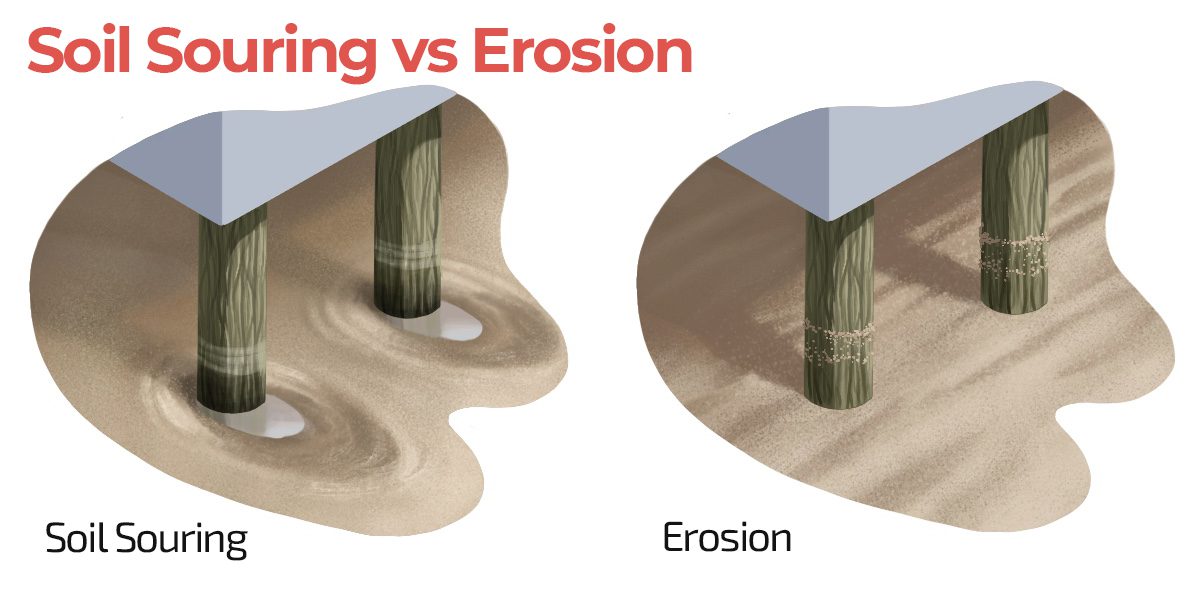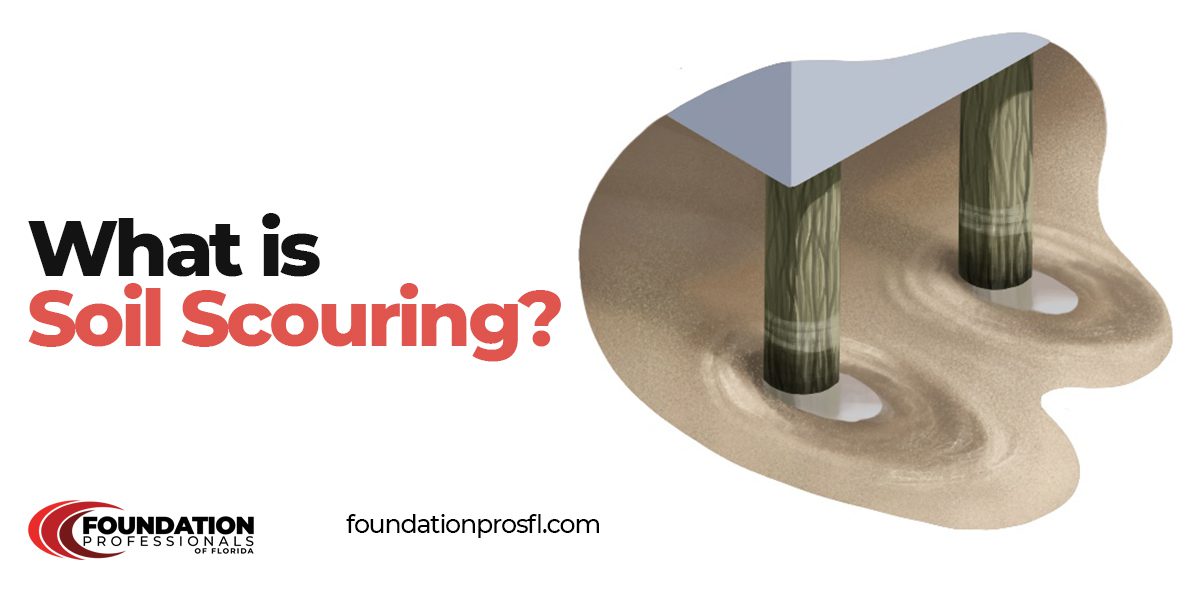Soil scouring vs erosion
Soil scouring is a form of soil erosion. So, let’s start by talking briefly about erosion…
Soil erosion is a natural process that happens when areas of the earth’s surface or substrate wear down because of wind, ice, and water flow.
Especially water. One well-known example of erosion caused by water is the Grand Canyon in Arizona. It took a long time, but water eventually managed to carve out what you see there today. Pretty impressive for a liquid, huh?

Scouring is a term used by engineers to describe the particular type of localized soil erosion that happens around elements of a foundation. This might be a bridge foundation, a building foundation, or the foundation underneath some other type of structure.
How does soil scouring happen?
As we just mentioned above, when it comes to soil erosion – remember, scouring is just a type of erosion – nothing beats the power of water.
Scouring happens when water flows around foundation objects and loosens soil. The waves then carry the soil away. All foundation elements underneath a bridge or a coastal building can be affected by scouring. When the water is more turbulent and the velocity of the flow increases, there will naturally be more scouring.
So, let’s take a closer look now at how soil scouring happens around the foundations of bridges and coastal buildings.
Learn more about – What are “Problem Soils”?
Bridges
The most common reason bridges collapse in the US is scouring around the foundation. This happens when water moves quickly around a bridge’s piers and abutments and scours sediment. That is, it carries sediment away from these foundation elements and leaves holes behind which then weaken the bridge’s structural integrity.
Since most bridges are built over water, most bridges will have problems with scouring over the course of their useful life. This is a problem because the flood repair cost for bridges runs around $50 million annually for bridges that are on the federal aid system. Also, bridge failures are up to five times more costly than bridge repairs. So, anything that can lead to bridge failure – including scouring – is a big problem.
Coastal buildings
Buildings along coastlines are unique in that they face things buildings inland don’t, namely waves, the rising and lowering of tides, storm surges, and floods that include debris. All this can cause extensive erosion and the scouring of soil around foundation piers and slabs – which weakens foundations.
Remember, the role of a foundation is to take the load on the building and transfer it into the ground. Therefore, foundations need to be sufficiently deep and they need to be strong. If they’re not, the building will fail. The foundations of coastal buildings need to be embedded deep enough into the ground so that the erosion and scouring of sandy soils which will undoubtedly happen over the building’s lifetime, don’t affect the foundation’s integrity and lead to a collapse.
Seawall scouring
Waves breaking against a vertical seawall also cause scouring. In fact, scouring is one of the main reasons seawalls fail. This 30 second video shows what happens when waves break against a seawall, scoop out the sediment, and then carry it away.
Seawalls that have been affected by scouring can be repaired via tieback wall systems and the injection of polyurethane grout. This will stop the soil erosion around the seawall.
So, to sum up…
Soil scouring is a type of soil erosion. It can happen whenever a foundation or part of a foundation – bridge, building, or other structure – is under water. Yes, it does cost money to repair foundation issues caused by soil scouring. However, a catastrophic foundation failure will cost you a lot more.
Make sure you diagnose foundation issues early before they turn into major problems. Contact us for an inspection today!

